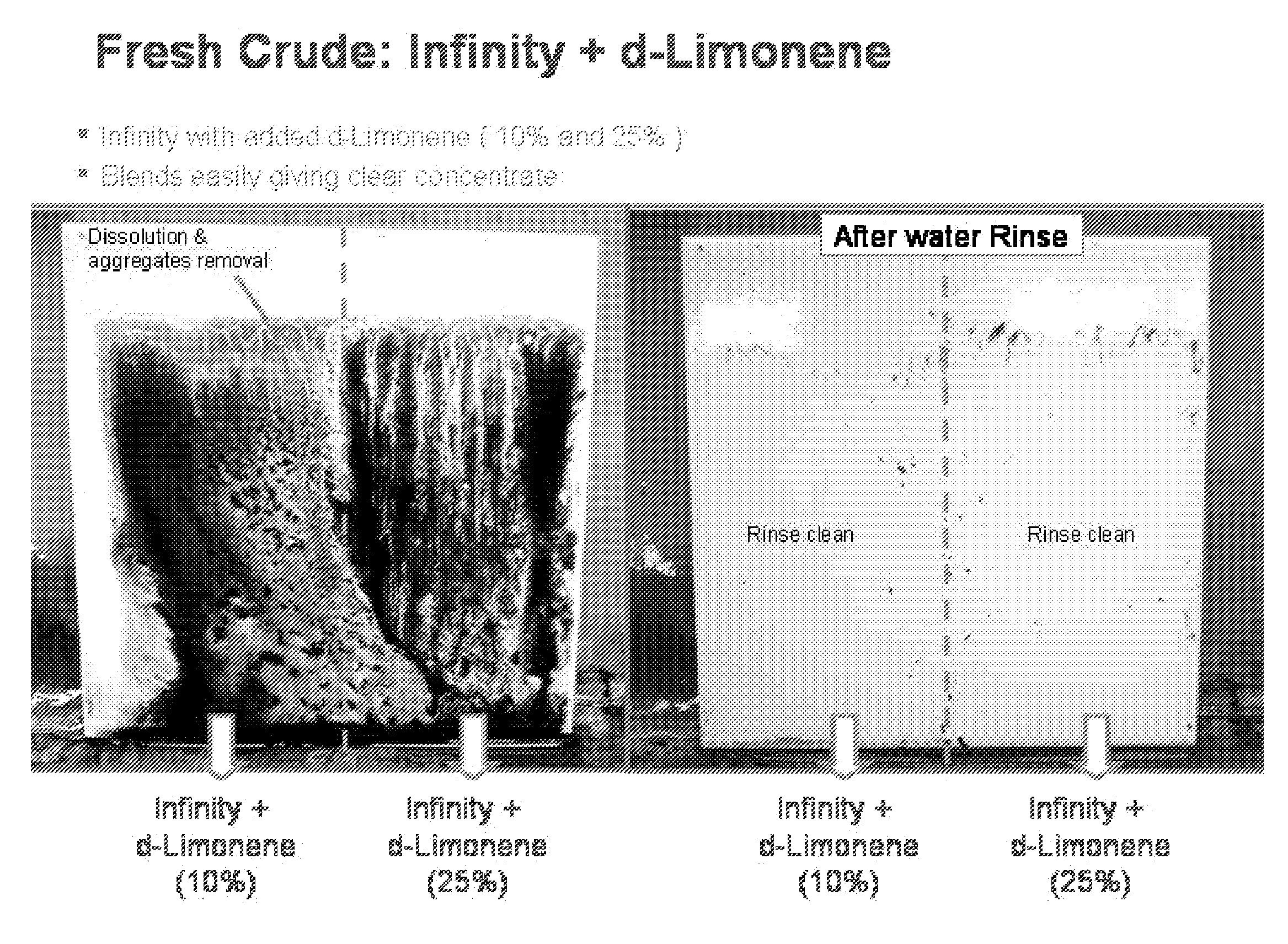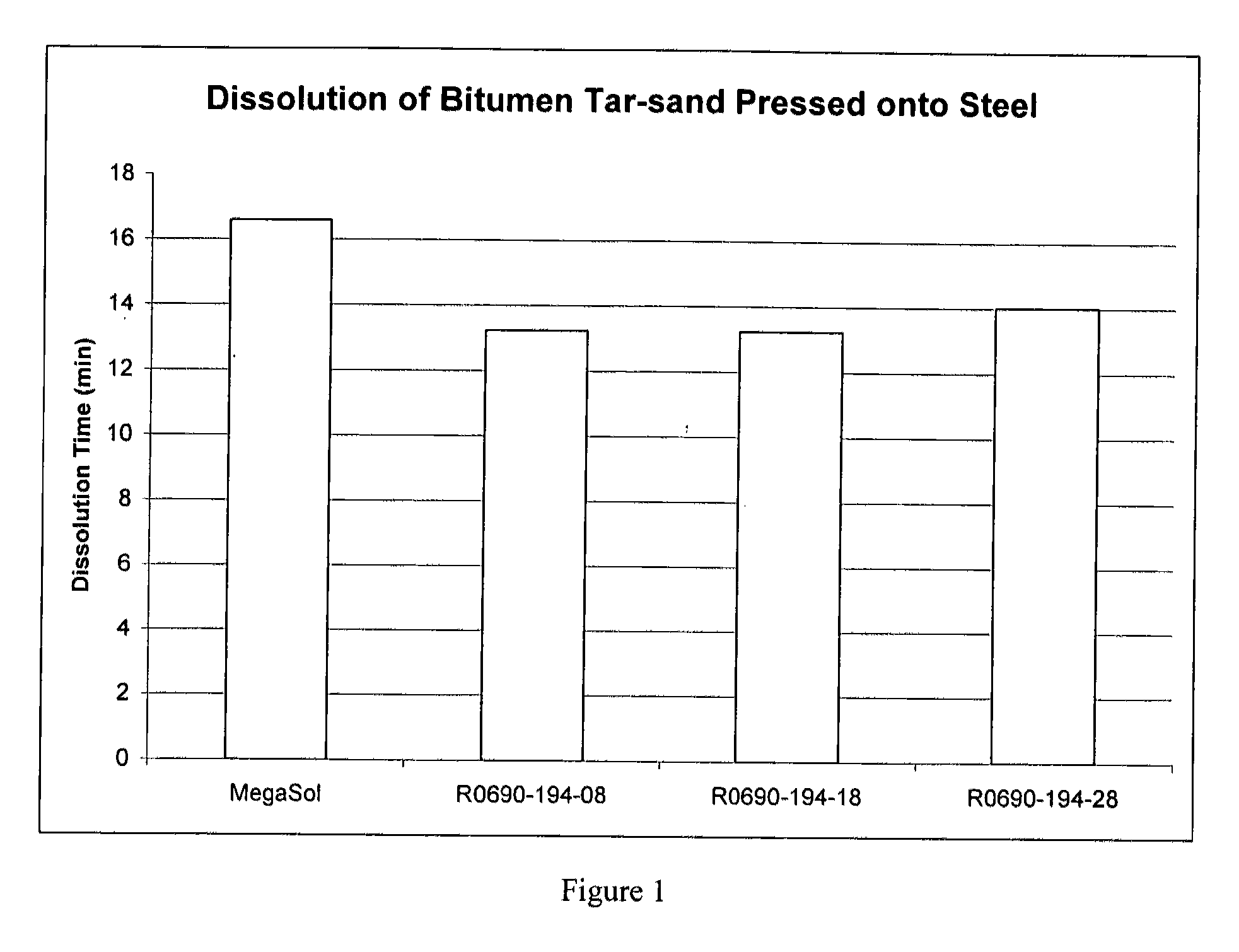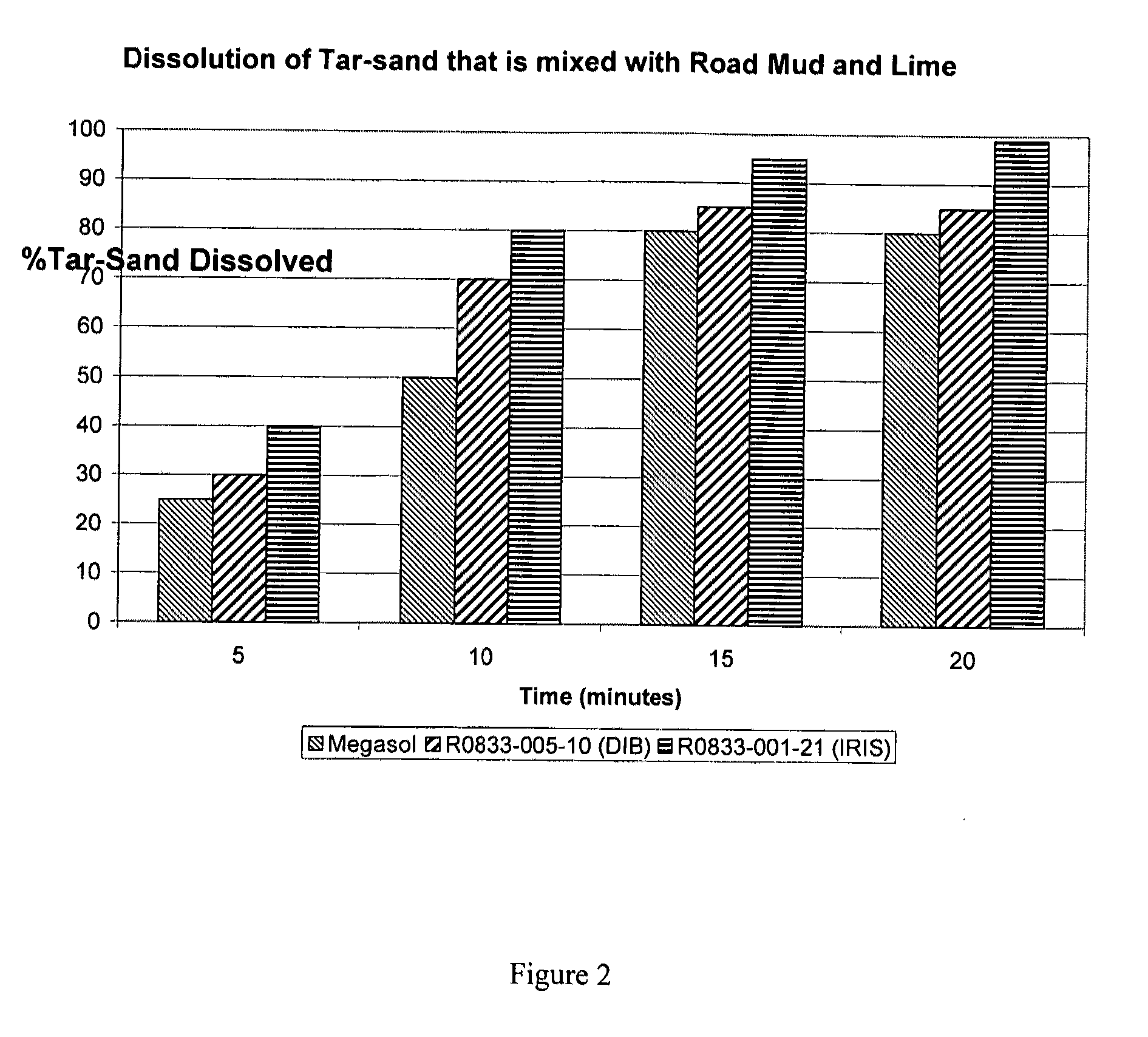Dibasic esters utilized as terpene co-solvents, substitutes and/or carriers in tar sand/bitumen/asphaltene cleaning applications
a technology of dibasic esters and co-solvents, which is applied in the direction of non-ionic surface active compounds, detergent compounding agents, liquid soaps, etc., can solve the problems of affecting the efficiency of operation, disrupting normal operations, and residual solvents on the surface being cleaned, etc., and achieves the effect of reducing the concentration of terpenes
- Summary
- Abstract
- Description
- Claims
- Application Information
AI Technical Summary
Benefits of technology
Problems solved by technology
Method used
Image
Examples
example 1
[0129]All work was benchmarked against the d-limonene-based Megasol, a typical industrial cleaner. The initial work focused on DIB as one of the active ingredients, but eventually included IRIS based formulations. DIB based formulations, which showed improvements in cleaning over Megasol, are listed below:
TABLE 1DIB Microemulsion (R0690-194-08)Weight in gramsDIB30+-Alpha pinene40Butyl Carbitol5Triethanol amine4Carpol GP-60154Pentex 9924Water (DI)10
TABLE 2DIB Microemulsion (R0690-194-18)Weight in gramsDIB30d-limonene40Butyl Carbitol5Triethanol amine4Carpol GP-60154Pentex 9927.4Water (DI)10
TABLE 3DIB Microemulsion (R0690-194-28)Weight in gramsDIB30d-limonene20Alpha pinene20Butyl carbitol5Triethanol amine4Carpol GP-60154Pentex 9927.6Water (DI)10
[0130]The results of these formulations can be seen in FIG. 1.
[0131]Both R0690-194-08 and R0690-194-18 have the lowest dissolution time for the bitumen. In some cases, higher water content is desired to reduce costs. The following formulations c...
example 2
Vehicle / Carrier / Extender to Deliver Cleaning Solvent at Reduced Concentrations
[0134]As shown in FIG. 3, samples of fresh crude oil were tested against the composition of described (Rhodiasolv Infinity) herein versus a d-limonene formulation. Rhodiasolv Infinity, for the purposes of these examples, comprises: from about 30-60%, by weight of the composition, a blend of dibasic esters comprising dialkyl methylglutarate and at least one of a dialkyl adipate or dialkyl ethylsuccinate; from about 30-60%, by weight of the composition, a C5-C20 alcohol ethoxylate surfactant; less than about 5%, by weight of the composition, polyethylene glycol; and from about 5-10%, by weight of the composition, a terpene.
[0135]Two stripes of crude oil were applied on a tile and allowed to dry only for 3-4 hrs in a ventilated hood (FIGS. 3, 4, and 6) and are referred to as “fresh crude”. D-limonene formulation used in the following example was formulated with nonionic surfactant: 92.5% d-limonene with 7.5% ...
PUM
| Property | Measurement | Unit |
|---|---|---|
| boiling point | aaaaa | aaaaa |
| boiling point | aaaaa | aaaaa |
| boiling point | aaaaa | aaaaa |
Abstract
Description
Claims
Application Information
 Login to View More
Login to View More - R&D
- Intellectual Property
- Life Sciences
- Materials
- Tech Scout
- Unparalleled Data Quality
- Higher Quality Content
- 60% Fewer Hallucinations
Browse by: Latest US Patents, China's latest patents, Technical Efficacy Thesaurus, Application Domain, Technology Topic, Popular Technical Reports.
© 2025 PatSnap. All rights reserved.Legal|Privacy policy|Modern Slavery Act Transparency Statement|Sitemap|About US| Contact US: help@patsnap.com



